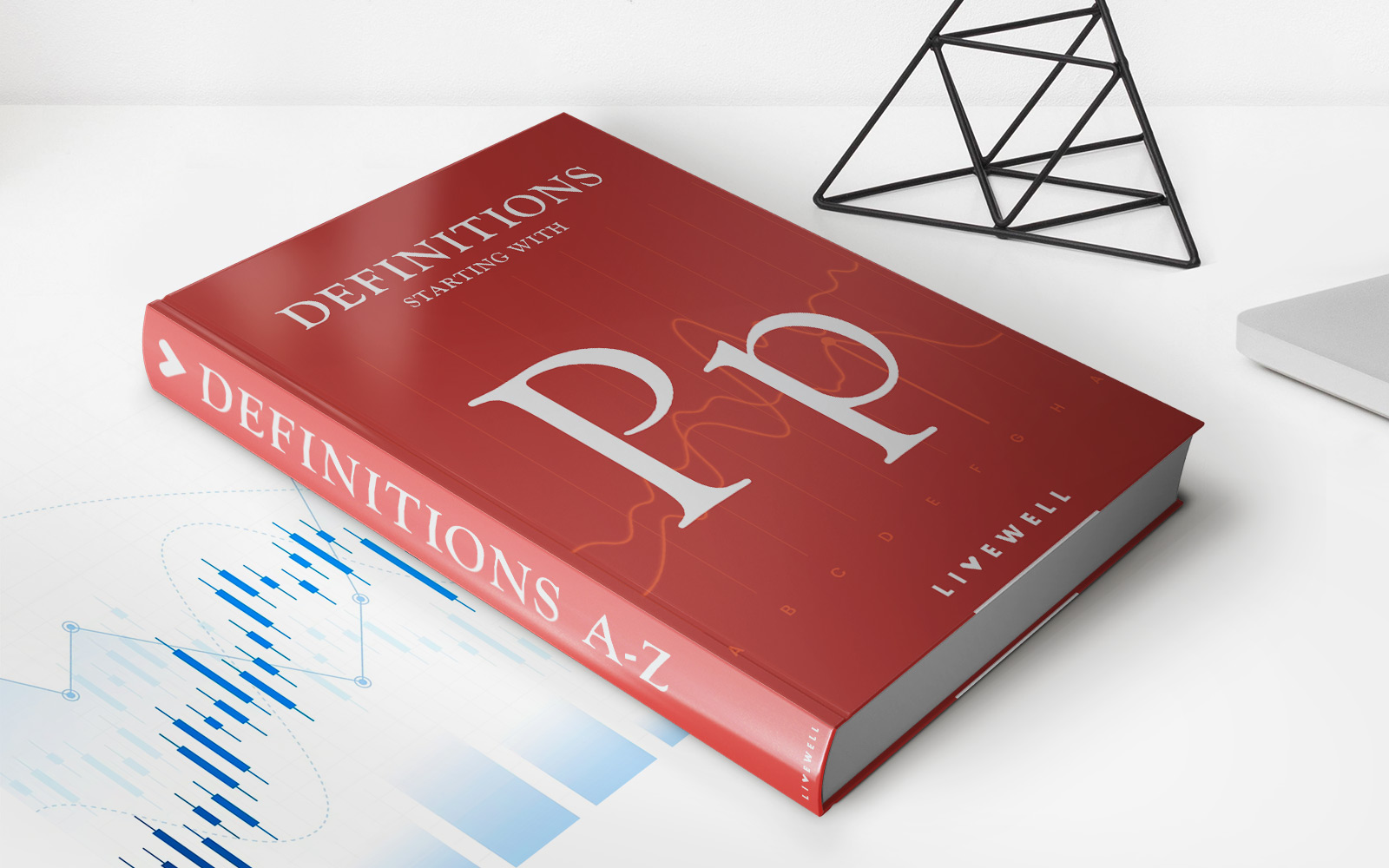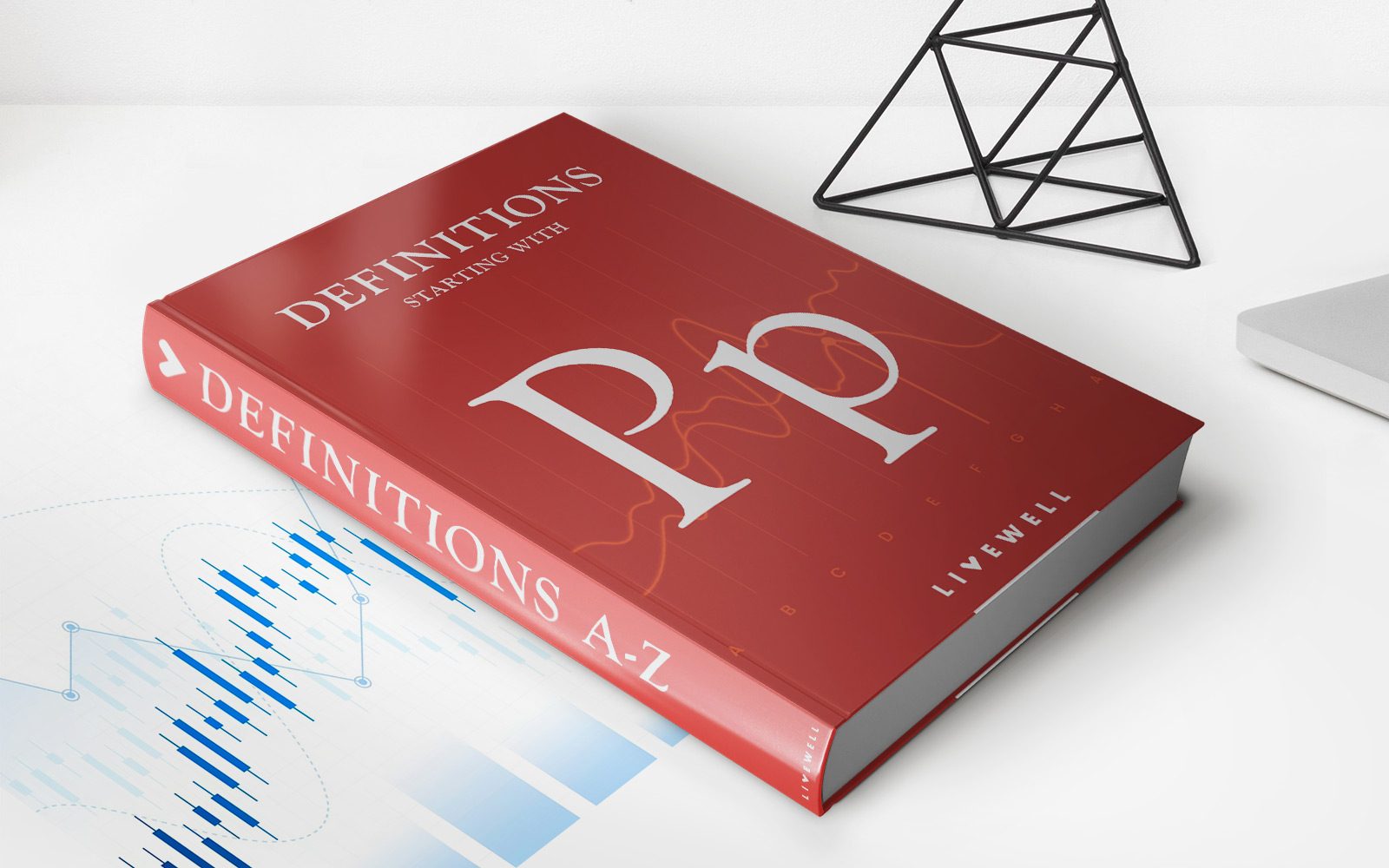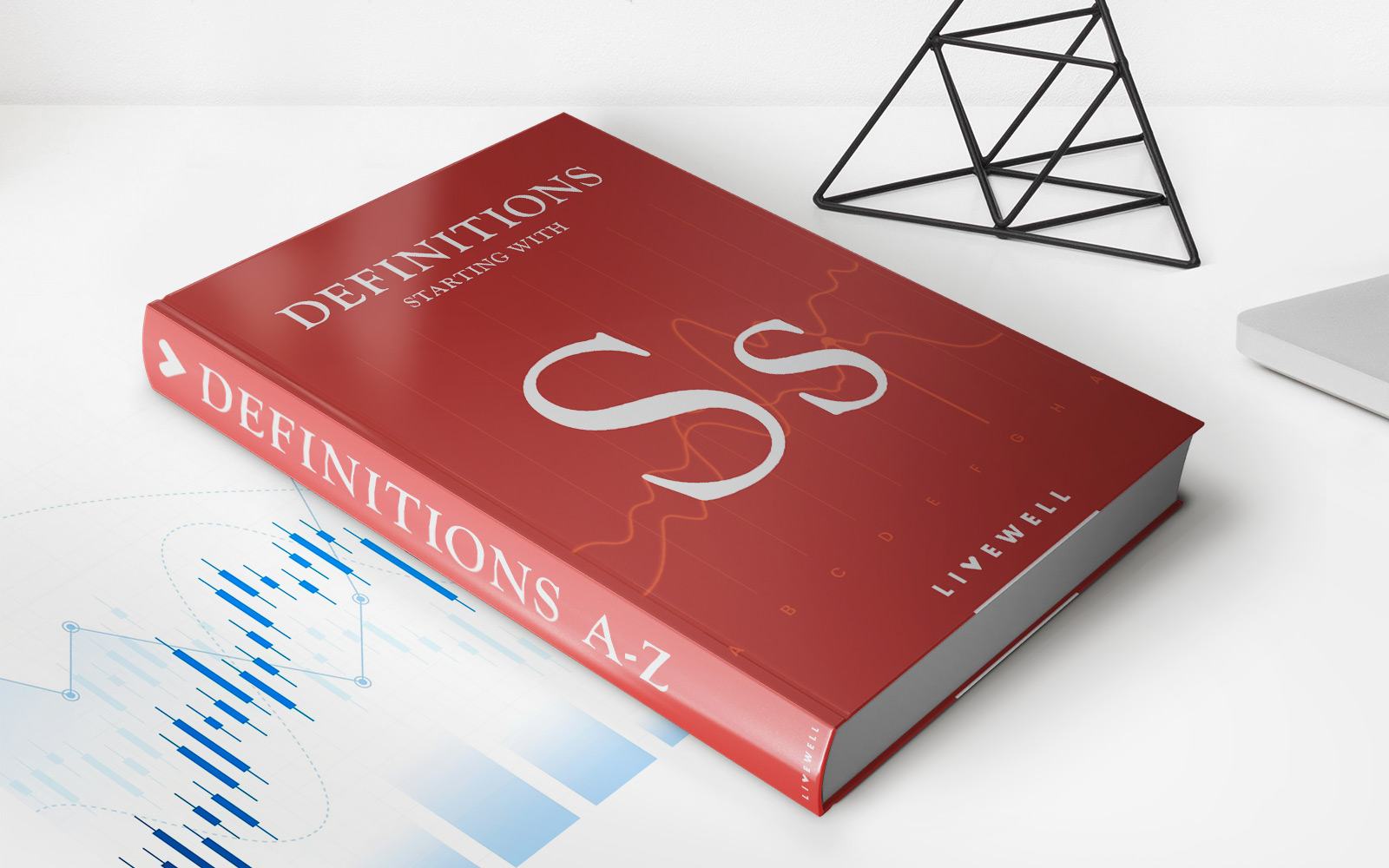

Finance
What Is An Occupational Pension Scheme
Published: November 27, 2023
Learn more about occupational pension schemes and how they can help you plan for your financial future. Discover the benefits and options available to you.
(Many of the links in this article redirect to a specific reviewed product. Your purchase of these products through affiliate links helps to generate commission for LiveWell, at no extra cost. Learn more)
Table of Contents
- Introduction
- Definition of an Occupational Pension Scheme
- Purpose and Benefits of an Occupational Pension Scheme
- Types of Occupational Pension Schemes
- Eligibility and Participation in an Occupational Pension Scheme
- Contributions and Funding of an Occupational Pension Scheme
- Investment and Management of Occupational Pension Scheme Funds
- Retirement Options and Benefits
- Regulation and Governance of Occupational Pension Schemes
- Comparison of Occupational Pension Schemes to Other Types of Retirement Plans
- Conclusion
Introduction
Welcome to the world of occupational pension schemes, an essential component of retirement planning that offers financial security and stability to employees. In this article, we will explore what occupational pension schemes are, their purpose, the benefits they provide, and how they differ from other types of retirement plans.
An occupational pension scheme, also known as an employer-sponsored pension scheme, is a retirement savings plan that is set up by an employer for the benefit of their employees. These schemes are designed to give employees a source of income during their retirement years, ensuring that they can maintain their standard of living and enjoy a financially secure future.
Unlike other types of retirement plans that are individually initiated, such as personal pension plans or individual retirement accounts (IRAs), occupational pension schemes are established and funded by employers. They play a crucial role in attracting and retaining talent, as they serve as a valuable employee benefit, offering long-term financial security.
The primary purpose of an occupational pension scheme is to provide employees with a steady income after they retire from active employment. This income is usually in the form of regular pension payments, which are based on factors such as the employee’s salary, length of service, and the specific structure of the scheme.
Occupational pension schemes offer several benefits to both employers and employees. For employers, offering a pension scheme can help enhance their reputation as a responsible employer and improve employee satisfaction and loyalty. Additionally, contributions made to the scheme are often tax-deductible for the employer, providing potential cost savings.
For employees, an occupational pension scheme represents a reliable source of retirement income, supplementing the state pension that might not be sufficient to cover all their financial needs. These schemes also offer tax advantages, as contributions made by employees are typically tax-free or eligible for tax relief, depending on the jurisdiction.
Furthermore, occupational pension schemes give employees the opportunity to benefit from employer contributions, which can significantly boost the overall value of their retirement savings. This can be through a matching contribution, where the employer matches the employee’s contributions up to a certain percentage, or through a defined benefit structure, where the employer guarantees a specific retirement income based on the employee’s salary and years of service.
Understanding the different types of occupational pension schemes, eligibility criteria, contribution levels, investment options, and retirement benefits is crucial for both employers and employees. In the following sections, we will dive deeper into these key aspects to help you navigate the complexities and make informed decisions regarding occupational pension schemes.
Definition of an Occupational Pension Scheme
An occupational pension scheme, also known as an employer-sponsored pension scheme, is a retirement savings arrangement established by an employer to provide financial support to its employees during their retirement years. It is a formalized system that enables employees to accumulate funds over their working lives, which are then used to generate a regular income once they retire.
Occupational pension schemes are typically set up by employers as part of their employee benefits package to attract and retain talented individuals. They are an integral part of the overall compensation package offered by employers and demonstrate their commitment to the well-being and financial security of their workforce.
These schemes can be structured in various ways, and their specific features depend on factors such as the employer’s preferences, legal and regulatory requirements, and the financial objectives of the scheme. The two primary types of occupational pension schemes are defined contribution (DC) schemes and defined benefit (DB) schemes.
In a defined contribution scheme, both the employer and the employee make regular contributions to a pension fund, which is then invested to generate investment returns. The ultimate retirement benefit is determined by the value of the accumulated fund at the time of retirement. The employee takes on the investment risk, as the final pension amount depends on investment performance.
On the other hand, in a defined benefit scheme, the employer guarantees a specific retirement benefit to the employee, typically based on factors such as salary, length of service, and a pre-defined formula. The employer assumes the investment risk, as they are responsible for ensuring that there are sufficient funds to meet the promised benefits.
Occupational pension schemes can also be categorized based on their membership and coverage. Some schemes are open only to certain categories of employees, such as full-time employees or those who have completed a specific period of service. Others may be available to all employees, including part-time workers and temporary staff.
In addition, pension schemes can be tailored to suit the needs of different industries or professions. For example, there may be specific pension schemes for teachers, healthcare professionals, or civil servants. These industry-specific schemes often have unique features that address the specific requirements and circumstances of the profession.
Overall, occupational pension schemes are a crucial mechanism for individuals to accumulate savings throughout their working lives and ensure a stable and secure retirement. They provide employees with a valuable benefit that helps them maintain their standard of living and peace of mind in their golden years.
Purpose and Benefits of an Occupational Pension Scheme
An occupational pension scheme serves a vital purpose in helping individuals secure their financial future during retirement. It offers several benefits to both employers and employees, making it an essential component of a comprehensive employee benefits package. Let’s explore the purpose and benefits of an occupational pension scheme in more detail.
1. Financial Security: The primary purpose of an occupational pension scheme is to provide financial security to employees once they retire from active employment. By contributing to the pension scheme throughout their working lives, employees can accumulate funds that will be used to generate a regular income stream during their retirement years. This serves as a reliable and sustainable source of income, ensuring that individuals can maintain their standard of living and cover their expenses even after they stop working.
2. Employer Attraction and Retention: Offering an occupational pension scheme is a powerful tool for employers to attract and retain top talent. In today’s competitive job market, employees often consider the benefits package offered by employers as a crucial factor in their decision-making process. By providing a pension scheme, employers demonstrate their commitment to the long-term financial well-being of their employees. This helps to enhance their reputation as a responsible and caring employer, making them more attractive to potential candidates and increasing employee loyalty and satisfaction.
3. Tax Advantages: Occupational pension schemes often come with tax advantages for both employers and employees. Employer contributions toward the scheme are usually tax-deductible, which can result in cost savings for the employer. For employees, the contributions they make to the scheme are typically tax-free or eligible for tax relief, depending on the jurisdiction. This means that employees can benefit from tax incentives while building their retirement savings.
4. Employer Contributions: One of the significant benefits of an occupational pension scheme is the opportunity for employees to receive employer contributions. In many cases, employers will match the contributions made by employees, up to a certain percentage or amount. This employer matching can significantly boost the overall value of the employee’s retirement savings, effectively increasing their retirement income. It serves as an extra incentive for employees to participate in the scheme and take advantage of the employer-matching contribution.
5. Investment Growth: Occupational pension schemes offer employees the opportunity to grow their retirement savings through investment. The funds contributed by employees and employers are typically invested in a range of assets, such as stocks, bonds, and property, with the goal of generating investment returns over the long term. This growth potential can further enhance the value of the pension fund, ensuring that the employee has a substantial retirement nest egg to rely on.
6. Spousal and Dependent Benefits: Occupational pension schemes often provide benefits not just for the participating employee but also for their spouse or dependents. In the event of the employee’s death, the scheme may offer a pension or lump-sum payment to the surviving spouse or dependent, providing financial support during a challenging time.
7. Social Responsibility: By offering an occupational pension scheme, employers demonstrate their commitment to social responsibility and the well-being of their workforce. Retirement planning is a critical aspect of an individual’s financial journey, and employers that provide a pension scheme acknowledge their role in helping employees secure a comfortable retirement. This can enhance the employer’s brand image and reputation as a socially responsible organization.
In summary, an occupational pension scheme serves the purpose of providing financial security and stability to employees during their retirement years. It offers a range of benefits, including financial peace of mind, tax advantages, employer contributions, investment growth, and support for loved ones. For employers, it acts as a tool to attract and retain top talent and demonstrate commitment to employee welfare. As retirement planning becomes increasingly important in today’s world, an occupational pension scheme is a valuable asset for employees and a critical component of a comprehensive employee benefits package.
Types of Occupational Pension Schemes
Occupational pension schemes come in different forms, each with its own characteristics and benefits. The two primary types of occupational pension schemes are defined contribution (DC) schemes and defined benefit (DB) schemes. Let’s explore these types in more detail:
1. Defined Contribution (DC) Schemes: In a defined contribution scheme, both the employer and the employee make regular contributions to a pension fund. These contributions are invested and, over time, grow according to the performance of the investments. The ultimate retirement benefit is determined by the value of the accumulated fund at the time of retirement. The employee takes on the investment risk, as the final pension amount depends on the performance of the investments. At retirement, the accumulated fund can be used to purchase an annuity or withdrawn as a lump sum, depending on the rules and regulations of the scheme.
2. Defined Benefit (DB) Schemes: In a defined benefit scheme, the employer guarantees a specific retirement benefit to the employee, usually based on factors such as salary, length of service, and a pre-defined formula. The employer assumes the investment risk and is responsible for ensuring that there are sufficient funds to meet the promised benefits. The retirement benefit is typically a fixed percentage of the employee’s final salary or an average salary over a specific period. The pension amount is predetermined, regardless of the investment performance. At retirement, the employee will receive a regular income stream based on the defined benefit structure of the scheme.
Furthermore, occupational pension schemes can also be categorized based on their structure and membership:
3. Hybrid Pension Schemes: Hybrid schemes combine elements of both defined contribution and defined benefit schemes. They aim to offer employees a degree of retirement income certainty while also giving them the potential for investment growth. The exact structure and benefits of hybrid schemes may vary, but common examples include cash balance plans and career average plans.
4. Group Personal Pension (GPP) Schemes: GPP schemes are retirement savings plans that are offered by employers but are individually managed by the employees. Each employee has their own individual pension account within the overall scheme. The employer often negotiates favorable terms with pension providers, such as lower management fees, while employees have the freedom to choose their investment options and contribute accordingly.
5. Stakeholder Pension Schemes: Stakeholder pensions are a type of defined contribution scheme that must comply with specific UK government standards. They are designed to be simple, transparent, and accessible, with low management charges. Stakeholder pensions are available to employees, self-employed individuals, and those without access to an employer-sponsored pension scheme.
It’s worth noting that the availability and prevalence of different types of occupational pension schemes may vary depending on the country and legal framework. Employers should carefully consider the specific needs of their workforce and consulting with pension providers or experts to determine the most suitable type of scheme to offer.
Overall, the types of occupational pension schemes provide employers and employees with flexibility and options to secure their retirement. Defined contribution schemes allow for individual investment choices and potential growth, while defined benefit schemes offer income certainty. Hybrid, GPP, and stakeholder schemes provide additional alternatives to accommodate specific requirements and circumstances. By understanding these different types, employers can select the most appropriate scheme to support their employees’ retirement goals.
Eligibility and Participation in an Occupational Pension Scheme
Eligibility and participation in an occupational pension scheme are essential aspects for both employers and employees to consider. Let’s explore the key factors that determine who is eligible to join such schemes and how employees can participate:
Eligibility Criteria: The eligibility criteria for an occupational pension scheme can vary based on factors such as country-specific regulations, company policies, and the terms of the pension scheme itself. Generally, eligibility is determined by:
- The employee’s age: Some schemes may require a minimum age for employees to be eligible for membership, such as 21 or 24.
- The employee’s employment status: Most schemes are open to employees who work full-time or part-time. However, the availability of pension benefits for temporary or contract employees may vary.
- The employee’s length of service: Some schemes may require employees to have completed a certain period of service before becoming eligible to join. This period could range from a few months to a year.
- The employee’s earnings: In some cases, there may be a minimum earnings threshold that employees must meet to be eligible for membership. This helps ensure that the scheme is financially viable for both the employer and the employee.
Automatic Enrollment: In many countries, including the UK with its automatic enrollment system, employers are required by law to automatically enroll eligible employees into an occupational pension scheme. This helps increase pension coverage and encourages employees to participate actively in saving for their retirement. However, employees have the choice to opt-out if they wish, although it is generally recommended to stay enrolled to take advantage of the employer contributions and the potential for investment growth.
Voluntary Enrollment: In addition to automatic enrollment, employees who initially do not meet the eligibility criteria or who join the company after the automatic enrollment period may still have the opportunity to voluntarily enroll in the occupational pension scheme. This allows employees to take advantage of the benefits of the scheme and start building their retirement savings.
Employee Contributions: Once enrolled in an occupational pension scheme, employees are typically required to make regular contributions from their salary into their pension fund. The contribution amount may be a fixed percentage of their salary or a pre-agreed amount. The contributions made by employees are often tax-free or eligible for tax relief, depending on the jurisdiction, helping to enhance the value of their retirement savings.
Employer Contributions: Many occupational pension schemes offer the additional benefit of employer contributions. These contributions are made by employers on top of the employee’s contributions and are typically based on a percentage of the employee’s salary. The employer’s contributions serve as an incentive for employees to participate in the scheme and can significantly boost the overall value of their retirement savings. The employer contribution amount and structure may vary depending on the terms of the scheme and any applicable legal requirements.
It’s important for employers to clearly communicate the eligibility criteria, participation options, and contribution details of the occupational pension scheme to their employees. This helps ensure that employees understand the benefits available to them, the importance of participating in the scheme, and the potential financial implications of their decisions.
Furthermore, employees should take the initiative to learn about their eligibility for the scheme and the potential advantages it offers. Saving for retirement is a long-term commitment, and participating in an occupational pension scheme can help individuals build a solid foundation for their financial future.
Contributions and Funding of an Occupational Pension Scheme
Contributions and funding are crucial aspects of an occupational pension scheme, as they determine the amount of retirement savings that employees can accumulate over time. Let’s explore how contributions are made and the sources of funding for an occupational pension scheme:
Employee Contributions: Employees participating in an occupational pension scheme typically make regular contributions from their salary into their pension fund. The contribution amount is often a percentage of their earnings, although some schemes may allow for fixed contribution amounts. These contributions are deducted from the employee’s salary before tax, which means they are made on a pre-tax basis, so employees benefit from tax relief or tax-free contributions, reducing their overall tax liability. The contribution rates may vary based on the specific scheme rules and the employee’s individual preferences.
Employer Contributions: Employer contributions are a significant advantage of an occupational pension scheme. Employers often make additional contributions to the pension fund on behalf of their employees. The employer’s contributions are typically based on a percentage of the employee’s salary, and the amount may vary depending on the scheme’s rules, legal requirements, and the employer’s financial capabilities. These employer contributions serve as an incentive for employees to participate in the scheme and can significantly boost the overall value of their retirement savings. It is important for employees to check the terms of their pension scheme to understand the contribution rates and any matching or enhanced contribution structures offered by the employer.
Government or Tax Relief: In some jurisdictions, governments provide incentives in the form of tax relief to encourage individuals to save for retirement through occupational pension schemes. Tax relief allows individuals to receive a tax deduction or tax credit on their pension contributions. This effectively reduces their taxable income, enabling them to save more for retirement while enjoying potential tax savings. The specific tax relief rules and limits vary depending on the country and applicable legislation, so it is essential for employees to understand the tax treatment of their pension contributions.
Investment Returns: The funds accumulated in an occupational pension scheme are invested to generate returns over time. These returns come from various investment vehicles, such as stocks, bonds, property, and other financial instruments. The investment returns contribute to the growth of the pension fund and increase the potential retirement savings for employees. It is important to note that investment returns are subject to market fluctuations, and the performance of the investments can impact the overall value of the pension fund.
Actuarial Funding: For defined benefit (DB) schemes, funding is determined based on actuarial calculations. Employers, as the sponsors of DB schemes, have the responsibility to ensure that there are sufficient funds to meet the promised retirement benefits to employees. Actuaries assess the long-term liabilities of the scheme and recommend contribution levels that are necessary to fund the scheme adequately. The actuarial funding approach considers factors such as life expectancy, salary projections, inflation, and expected investment returns. Employers contribute to the scheme based on these actuarial calculations to ensure that the pension benefits can be met.
Legal and Regulatory Requirements: The funding of an occupational pension scheme is subject to legal and regulatory requirements imposed by government bodies or regulatory authorities. These requirements ensure that the scheme is adequately funded and that the interests of employees are protected. Employers must comply with these regulations and contribute to the scheme accordingly to meet the funding obligations set forth by the authorities.
It is essential for both employers and employees to have a clear understanding of how contributions are made and who is responsible for funding the occupational pension scheme. Employers should communicate the contribution rates, employer contribution structures, and any tax benefits to employees. Employees, on the other hand, should familiarize themselves with the contribution options, take advantage of matching contributions, and consider potential tax advantages to maximize their retirement savings. By ensuring proper contributions and funding, occupational pension schemes can effectively fulfill their purpose of providing employees with robust retirement income.
Investment and Management of Occupational Pension Scheme Funds
The investment and management of occupational pension scheme funds play a crucial role in determining the growth and success of the scheme. The funds accumulated in the scheme are invested in various assets to generate returns over time. Let’s explore how these funds are invested and managed:
Investment Options: Occupational pension schemes offer a range of investment options for the funds contributed by employees and employers. These options may include stocks, bonds, mutual funds, real estate, and other financial instruments. The specific investment options available can vary depending on the terms of the scheme and any restrictions imposed by regulatory authorities. The selection of investment options is typically made by the trustees or investment managers responsible for managing the pension scheme funds.
Investment Strategies: Pension scheme trustees and investment managers develop investment strategies to allocate the funds across various investment options. These strategies aim to achieve a balance between risk and return while considering factors such as the long-term objectives of the scheme, the risk tolerance of the members, and market conditions. The investment strategies may involve diversification, where the funds are spread across different asset classes to reduce risk, or focus on specific sectors or geographic regions based on anticipated market performance.
Risk Management: Managing investment risks is a critical aspect of occupational pension scheme fund management. Trustees and investment managers closely monitor and assess the risks associated with investments to minimize potential losses and protect the interests of scheme members. They perform thorough due diligence on potential investment options, conduct risk assessments, and implement risk management strategies, such as diversification and regular portfolio rebalancing. Risk management practices aim to ensure the long-term sustainability and stability of the pension scheme by mitigating potential risks to the fund’s performance.
Investment Performance: The investment performance of occupational pension scheme funds has a direct impact on the growth and value of the fund. Trustees and investment managers regularly evaluate the performance of the investments and compare them against relevant benchmarks or targets. They assess factors such as returns, volatility, and cost-effectiveness to determine if the investments are meeting the objectives of the scheme. Adjustments to the investment strategies may be made based on the performance analysis to optimize the fund’s growth potential.
Governance and Oversight: Occupational pension schemes are subject to regulatory requirements and fiduciary responsibilities. Trustees have the duty to act in the best interests of the scheme members and ensure compliance with legal and regulatory obligations. They oversee the investment and management activities of the pension scheme and make decisions based on the objectives, risk tolerance, and preferences of the scheme members. Trustees often engage with investment professionals, such as fund managers or consultants, to provide expert advice and assistance in managing the scheme’s investments.
Transparency and Communication: Open and transparent communication about the investment and management strategies is essential for both employers and employees. Employers should provide regular updates to scheme members on the performance of the pension scheme funds and any changes to the investment strategies. Employees should be informed about the investment options available, the risks involved, and the potential rewards. Clear and accessible communication helps to build trust and confidence among scheme members and enables them to make informed decisions regarding their retirement savings.
Overall, the investment and management of occupational pension scheme funds require careful planning, robust risk management practices, and diligent oversight. By implementing effective investment strategies, managing risks, and maintaining transparent communication, pension scheme trustees and investment managers can optimize the growth and value of the funds, ultimately benefiting scheme members in their quest for a financially secure retirement.
Retirement Options and Benefits
Occupational pension schemes offer various retirement options and benefits to ensure that employees can enjoy a comfortable and financially secure retirement. Let’s explore the retirement options and benefits typically provided by these schemes:
Regular Pension Payments: One of the main benefits of occupational pension schemes is the provision of regular pension payments during retirement. Pension payments are typically made on a monthly or quarterly basis, providing a stable and predictable income stream for retirees. The amount of the pension payment may be based on factors such as the employee’s salary, length of service, and the structure of the pension scheme, such as a defined benefit or defined contribution. Regular pension payments allow retirees to budget and manage their expenses effectively.
Lump Sum Option: In addition to regular pension payments, many occupational pension schemes also offer a lump sum option at retirement. This allows retirees to withdraw a portion of their pension fund as a one-time payment. The lump sum payment can be used to cover immediate expenses, pay off debts, or make investments. It provides retirees with flexibility and the ability to fulfill specific financial needs or goals. The availability and size of the lump sum option may be subject to scheme rules and legal restrictions.
Annuity Purchase: Annuities are another retirement option typically available within occupational pension schemes. An annuity entails using a portion or the entirety of the pension fund to purchase an insurance product that guarantees a regular income for life. The annuity payment amount is determined by factors such as annuity rates, the size of the pension fund, and the individual’s age and health condition at the time of purchase. Choosing an annuity can provide retirees with the assurance of a fixed income throughout their retirement years.
Flexibility and Phased Retirement: Some occupational pension schemes offer flexibility in terms of the retirement age and the ability to phase retirement. Rather than retiring fully at a specific age, individuals may have the option to reduce their working hours gradually or transition to part-time employment while still receiving pension payments. This phased retirement approach can help individuals maintain an income stream, gradually adjust to retirement, and potentially extend the overall period of retirement savings.
Tax-Efficient Options: Occupational pension schemes often provide tax advantages in retirement. For example, regular pension payments may be taxed at a lower rate than employment income, offering potential tax savings for retirees. Additionally, lump sum withdrawals or annuity payments may be subject to specific tax treatment, such as a tax-free cash lump sum allowance or the ability to spread tax liabilities over multiple years. The tax efficiencies provided by pension schemes can help retirees optimize their after-tax income and make the most of their retirement savings.
Survivor Benefits: Many occupational pension schemes include survivor benefits to provide financial support to the spouse or dependents of a deceased scheme member. Survivor benefits may take the form of continuing pension payments to the surviving spouse, a lump sum payment, or both. These benefits can help ensure the financial security of loved ones and provide peace of mind during difficult times.
Indexation and Inflation Protection: Some occupational pension schemes offer indexation or inflation protection to pension payments. This ensures that the value of the pension keeps pace with inflation, helping retirees maintain their purchasing power over time. Indexation may be based on a specific benchmark, such as the consumer price index (CPI), and can provide retirees with a measure of financial security against rising living costs.
It is important for employees to review and understand the specific retirement options and benefits provided by their employer’s occupational pension scheme. Consulting with pension scheme administrators or financial advisors can help individuals make informed decisions about which retirement options best suit their circumstances and retirement goals.
By providing a range of retirement options and benefits, occupational pension schemes play a crucial role in helping employees achieve a secure and fulfilling retirement, allowing them to enjoy their golden years with peace of mind.
Regulation and Governance of Occupational Pension Schemes
The regulation and governance of occupational pension schemes are essential to ensure the fair and prudent management of pension funds and protect the interests of scheme members. Strong regulatory frameworks and effective governance structures are in place to oversee and monitor these schemes. Let’s explore the key aspects of the regulation and governance of occupational pension schemes:
Legal and Regulatory Frameworks: Occupational pension schemes are subject to legal and regulatory requirements imposed by government bodies or regulatory authorities. These frameworks vary by jurisdiction but typically include laws, regulations, and guidelines that set out the minimum standards for operating pension schemes. The legal and regulatory frameworks aim to safeguard the pension rights of employees, ensure transparency and fairness, and promote sound and responsible management of pension funds.
Regulatory Authorities: Regulatory authorities, such as pension regulators or financial services authorities, are responsible for overseeing and enforcing compliance with the relevant laws and regulations. These authorities monitor the activities of pension scheme trustees, employers, and service providers to ensure compliance with the legal and regulatory requirements. They may also provide guidance and support to stakeholders in implementing best practices and addressing any concerns or issues that arise within the pension industry.
Trustees and Fiduciary Duties: Occupational pension schemes are typically governed by a board of trustees who have legal and fiduciary responsibilities. Trustees are appointed to act in the best interests of the scheme members and ensure that the scheme is operated in accordance with its governing documents and relevant laws and regulations. They have a duty to act prudently, honestly, and in good faith, and manage the pension scheme assets responsibly. Trustees are responsible for making decisions regarding investment strategies, contributions, benefits, and overall scheme governance.
Scheme Documentation and Communications: Occupational pension schemes are required to have clear and transparent scheme documentation, including the scheme rules, member guides, and statements of investment principles. These documents outline the rights and obligations of scheme members, the structure and operation of the scheme, and the investment and management principles. Pension scheme administrators are responsible for providing accurate and timely communications to scheme members, ensuring that they are informed about their pension rights, options, and any changes to the scheme.
Reporting and Disclosure: Regulatory frameworks often require occupational pension schemes to submit periodic reports and disclosures to regulatory authorities and scheme members. These reports provide important information on the financial position of the scheme, investment performance, contribution levels, and any changes or updates to the scheme. The reporting and disclosure requirements aim to ensure transparency, accountability, and good governance practices, allowing stakeholders to monitor the scheme’s financial health and performance.
Independent Audits and Actuarial Valuations: To ensure the integrity and accuracy of occupational pension scheme finances, independent audits and actuarial valuations are often required. Independent auditors examine the financial statements, investment records, and compliance with regulations, providing assurance on the scheme’s financial reporting. Actuarial valuations assess the long-term liabilities and funding position of defined benefit schemes, supporting the determination of contribution rates and ensuring that there are sufficient funds to meet the promised benefits.
Conflict of Interest Management: Trustees and other scheme stakeholders must demonstrate effective conflict of interest management. They should act impartially and avoid any situations or decisions that could compromise the best interests of scheme members. Conflicts of interest should be identified, disclosed, and properly managed to maintain the trust and confidence of scheme members in the governance and management of their pension funds.
By adhering to robust regulation and governance frameworks, occupational pension schemes aim to protect the retirement savings of scheme members and ensure the long-term sustainability and security of the schemes. Employers, trustees, pension scheme administrators, and regulatory authorities play critical roles in upholding these frameworks and driving good governance practices within the occupational pension industry.
Comparison of Occupational Pension Schemes to Other Types of Retirement Plans
Occupational pension schemes are just one of several types of retirement plans available to individuals. Understanding the differences between occupational pension schemes and other retirement plans is crucial for employees and employers when considering the most suitable options. Let’s compare occupational pension schemes to other common types of retirement plans:
Individual Retirement Accounts (IRAs): IRAs are retirement savings plans that individuals can set up on their own, independent of an employer. Unlike occupational pension schemes, IRAs do not require employer sponsorship or contribution matching. Individuals have greater control over their IRA contributions, investment choices, and timing of withdrawals. However, contribution limits for IRAs are generally lower than those for occupational pension schemes, and the responsibility for managing the investments and ensuring sufficient savings for retirement rests solely on the individual.
401(k) Plans: 401(k) plans are employer-sponsored retirement plans commonly found in the United States. Like occupational pension schemes, 401(k) plans allow employees to make contributions through payroll deductions and may also offer employer matching contributions. However, 401(k) plans are typically defined contribution (DC) plans, where the ultimate retirement benefit is based on the accumulated fund value, rather than a guaranteed defined benefit as seen in some occupational pension schemes.
Self-Invested Personal Pensions (SIPPs): SIPPs are UK-based pension plans that offer individuals a high level of control and flexibility over their pension investments. Similar to IRAs, SIPPs allow individuals to self-manage their investment portfolios and choose from a wide range of permitted investments. SIPPs offer tax advantages like occupational pension schemes, but individuals bear the responsibility for making investment decisions and ensuring sufficient savings for retirement.
State Pensions: State pensions are government-provided retirement benefits available in many countries. They provide individuals with a basic level of income during retirement. Unlike occupational pension schemes, state pensions are not linked to specific employers and are funded through taxation or social security contributions. State pensions serve as a foundation for retirement income, but they may not provide sufficient funds to cover all expenses, making additional retirement plans such as occupational pension schemes crucial for a comfortable retirement.
Personal Retirement Savings: Personal retirement savings can include various investment vehicles like individual savings accounts (ISAs), mutual funds, or real estate investments. Unlike occupational pension schemes, personal retirement savings are completely self-directed, without employer involvement. While personal retirement savings offer flexibility and control, they may lack the tax advantages and employer contributions typically found in occupational pension schemes.
When comparing occupational pension schemes to other retirement plans, it becomes clear that the main strengths of occupational pension schemes lie in their employer sponsorship, potential for employer contributions, and often attractive tax benefits. Occupational pension schemes provide a structured and collective approach to retirement savings, with the responsibility for investment management shared between employees and employers.
However, it is important to note that different retirement plans have varying features and benefits. It is advisable for employees to consider their individual circumstances, preferences, and financial goals when choosing the most appropriate retirement plan, and to consult financial advisors or pension experts for personalized guidance.
Conclusion
Occupational pension schemes are invaluable tools for employees and employers alike in ensuring financial security and stability during retirement. These schemes offer employees a reliable source of income, supplementing the state pension and helping them maintain their standard of living long after they have left the workforce. For employers, offering an occupational pension scheme enhances their reputation, attracts top talent, and fosters employee loyalty.
In this article, we have explored the definition and purpose of occupational pension schemes, delved into the various types of schemes, and discussed eligibility and participation criteria. We have also explored how contributions are made, the investment and management of pension scheme funds, the retirement options and benefits available to members, and the importance of effective regulation and governance in protecting the interests of scheme members.
Comparing occupational pension schemes to other types of retirement plans, it is evident that occupational pension schemes provide unique advantages, such as employer contributions and tax benefits, along with the potential for guaranteed retirement benefits in the case of defined benefit schemes.
While occupational pension schemes are designed to provide long-term financial security, it is essential for employees to take an active role in understanding their participation options, making regular contributions, and staying informed about the scheme’s performance and available retirement options. Employers must fulfill their responsibilities by effectively communicating scheme details, facilitating employee participation, and ensuring robust governance and management of the pension scheme funds.
Ultimately, the success of occupational pension schemes relies on the collaborative efforts of employers, trustees, regulatory authorities, and scheme members. Through careful planning, sound governance practices, and diligent investment management, occupational pension schemes can help employees build a solid foundation for a comfortable retirement and enjoy the security and peace of mind they deserve.
As retirement planning becomes increasingly important in today’s world, understanding occupational pension schemes and making informed decisions regarding retirement savings are crucial steps towards a financially secure future.














